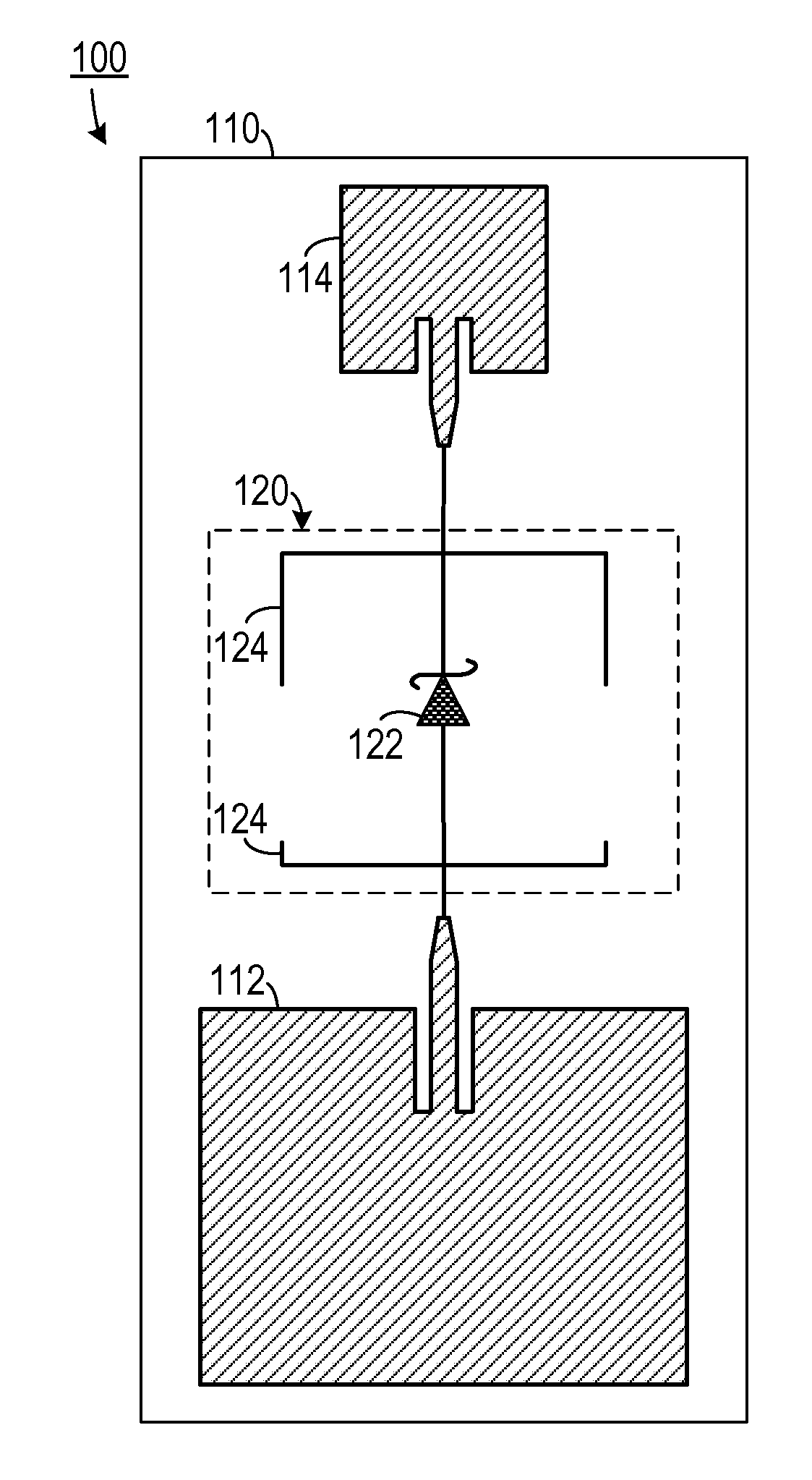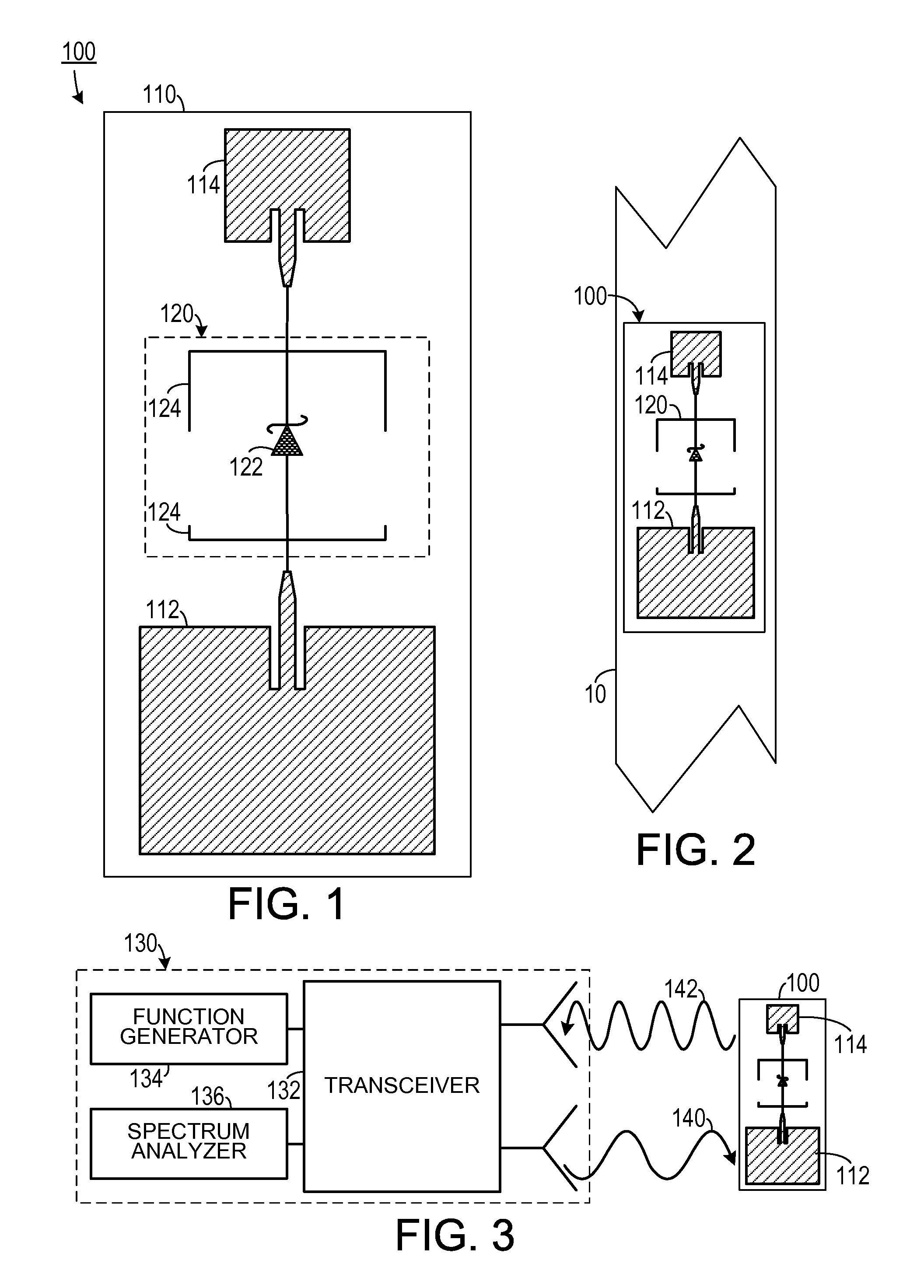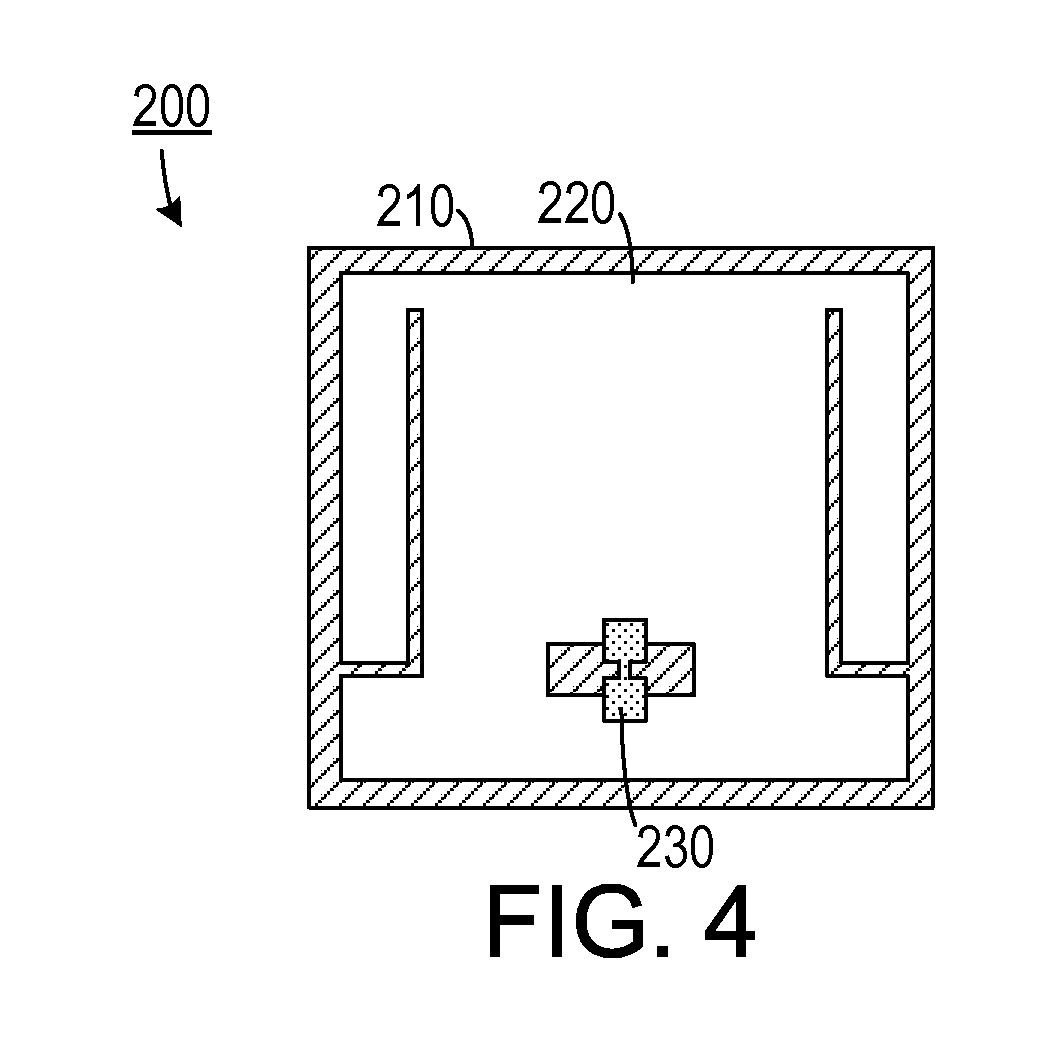Frequency doubling antenna sensor for wireless strain and crack sensing
a wireless strain and crack sensing and frequency doubling technology, applied in the field of strain and crack sensors, can solve the problems of increasing installation time and system cost, inconvenient for many practical applications, and limited distance achieved by inductive coupling
- Summary
- Abstract
- Description
- Claims
- Application Information
AI Technical Summary
Benefits of technology
Problems solved by technology
Method used
Image
Examples
Embodiment Construction
[0020]A preferred embodiment of the invention is now described in detail. Referring to the drawings, like numbers indicate like parts throughout the views. Unless otherwise specifically indicated in the disclosure that follows, the drawings are not necessarily drawn to scale. As used in the description herein and throughout the claims, the following terms take the meanings explicitly associated herein, unless the context clearly dictates otherwise: the meaning of “a,”“an,” and “the” includes plural reference, the meaning of “in” includes “in” and “on.”
[0021]As shown in FIGS. 1-3, one embodiment of a strain and crack sensor 100 includes a thin dielectric substrate 110, a receiving patch antenna 112 having a first resonant frequency disposed on the substrate, a transmitting patch antenna 114 also disposed on the substrate and having a second resonant frequency that is twice the first resonant frequency. A matching network 120 electrically couples the receiving patch antenna 112 to the...
PUM
| Property | Measurement | Unit |
|---|---|---|
| frequency | aaaaa | aaaaa |
| resonance frequency | aaaaa | aaaaa |
| resonance frequency | aaaaa | aaaaa |
Abstract
Description
Claims
Application Information
 Login to View More
Login to View More - R&D Engineer
- R&D Manager
- IP Professional
- Industry Leading Data Capabilities
- Powerful AI technology
- Patent DNA Extraction
Browse by: Latest US Patents, China's latest patents, Technical Efficacy Thesaurus, Application Domain, Technology Topic, Popular Technical Reports.
© 2024 PatSnap. All rights reserved.Legal|Privacy policy|Modern Slavery Act Transparency Statement|Sitemap|About US| Contact US: help@patsnap.com










